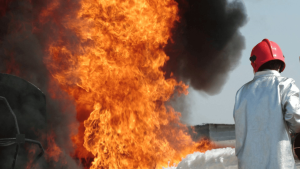Next week, the pivotal first bellwether test trial is set to begin in the massive class action MDL over the personal and environmental harm caused by PFAS “forever chemicals” in AFFF firefighting foam. The firefighting foam MDL now has over 4,000 plaintiffs with pending cases. Now, after years of consolidated discovery and buildup, the test case is finally ready to be presented to a jury in a federal courtroom in South Carolina.
The case selected for this initial bellwether trial is the City of Stuart v. 3M Co. et al. (2:18-cv-03487). The outcome of the trial in the City of Stuart case will have a massive impact on the future course of the litigation. It will be the first time a jury will decide the scientific evidentiary battle that has been waged between the plaintiffs and defendants such as DuPont and 3M.
If the jury resolves this debate in favor of the plaintiff and awards a significant verdict, it could prompt a multi-billion-dollar settlement involving dozens of major companies. It could also set the stage for future cases involving similar tort claims by local municipalities based on environmental contamination.










